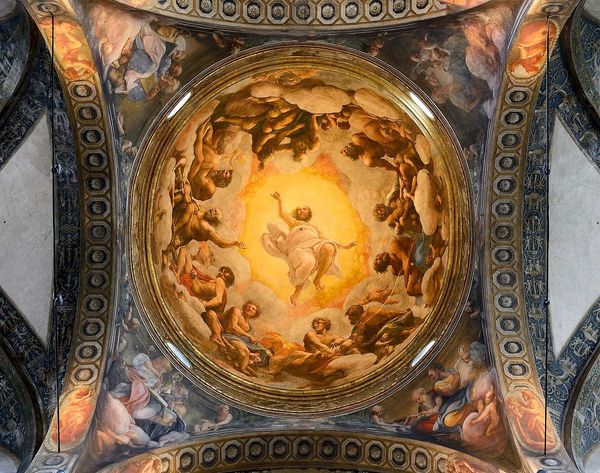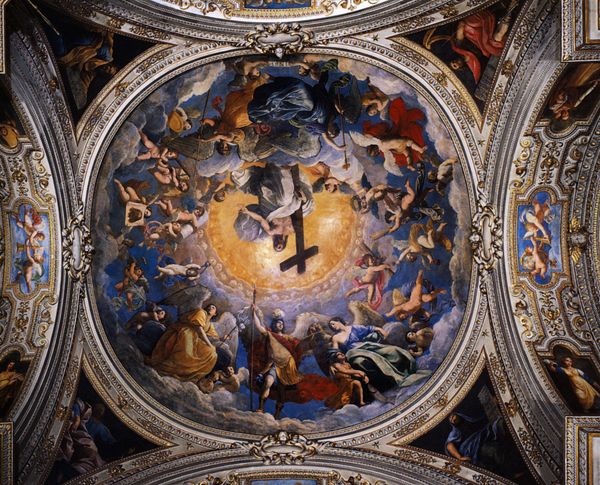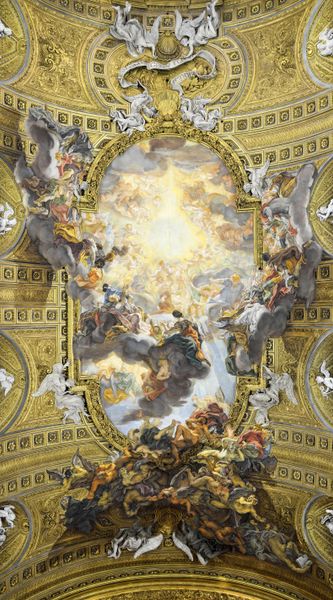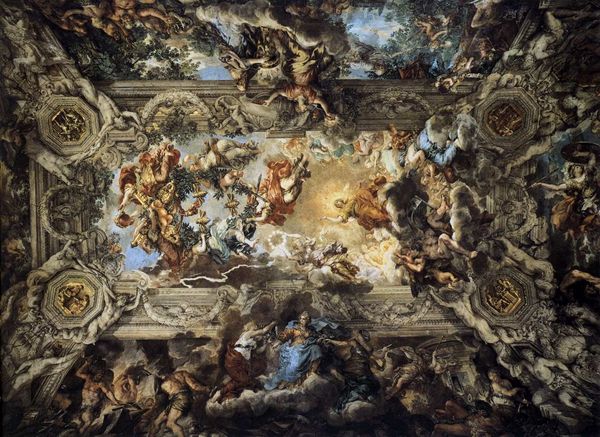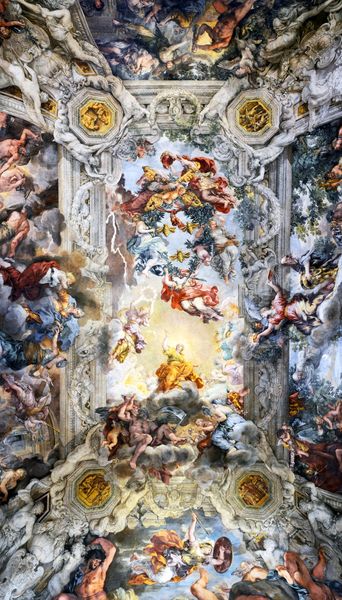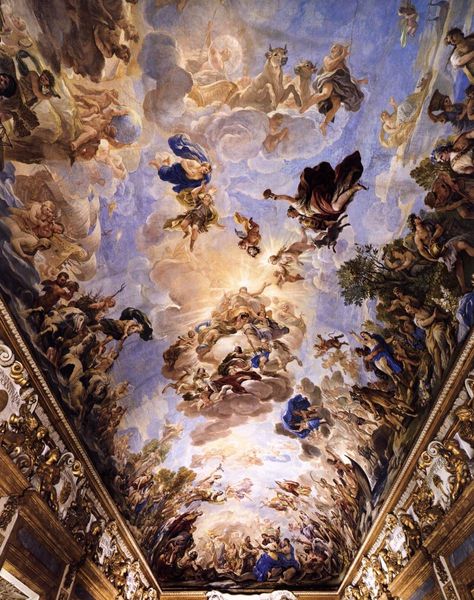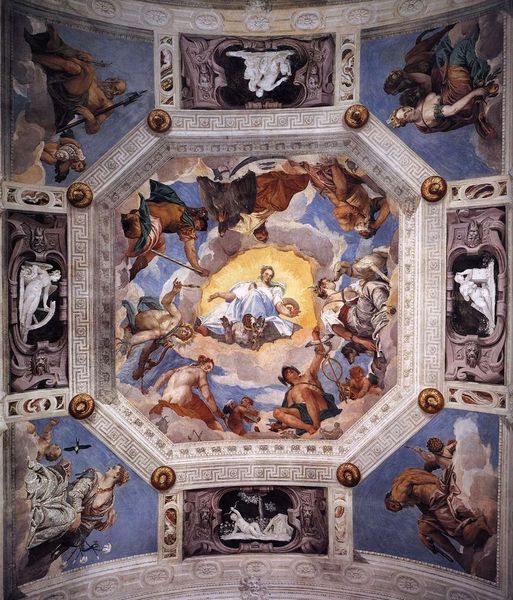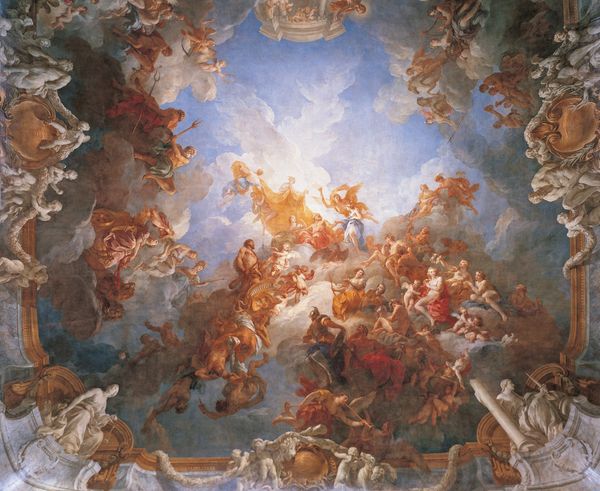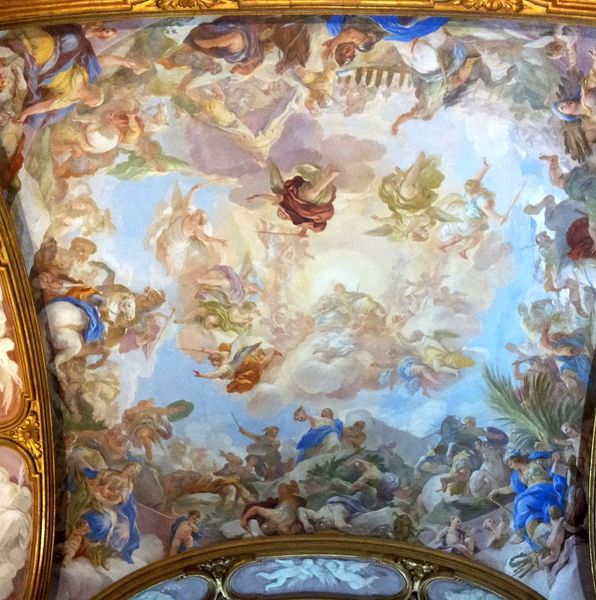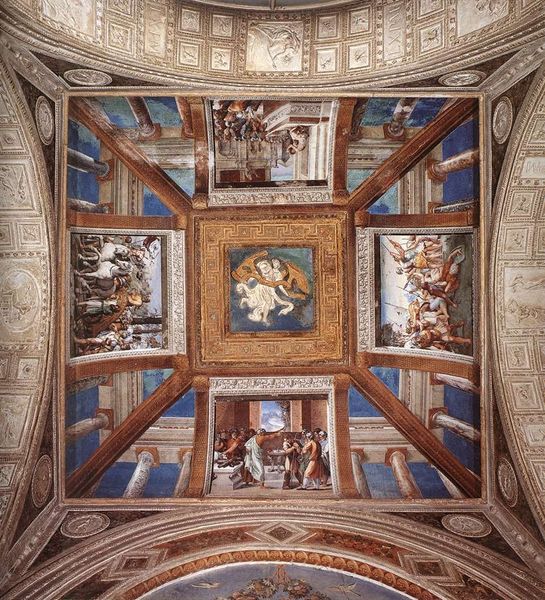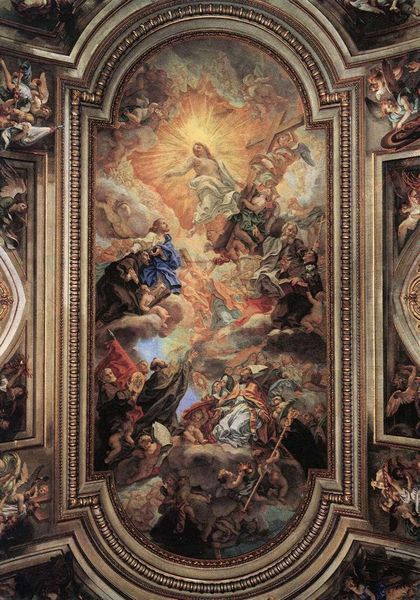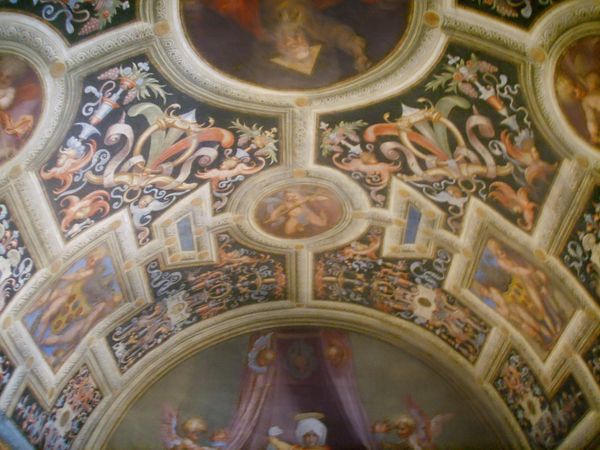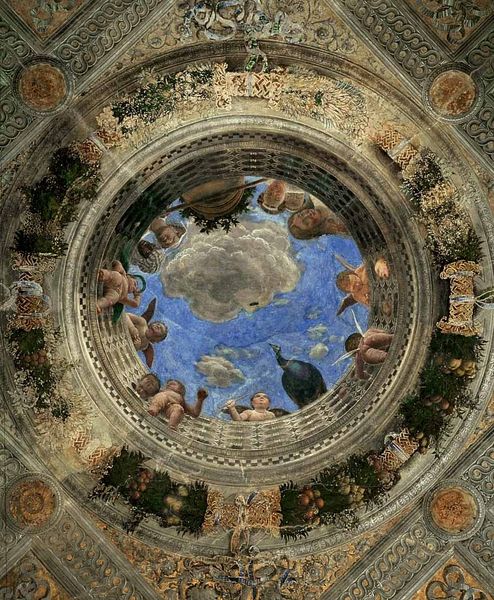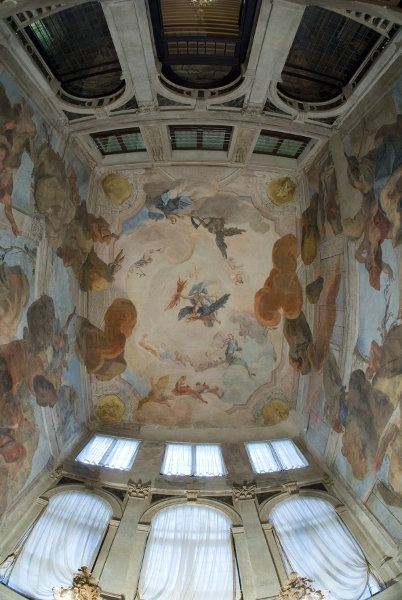
The Assumption of the Virgin 1530
0:00
0:00
correggio
Duomo di Parma (Cattedrale di Santa Maria Assunta), Parma, Italy
painting, oil-paint, fresco
#
portrait
#
high-renaissance
#
allegory
#
painting
#
oil-paint
#
figuration
#
fresco
#
christianity
#
history-painting
#
italian-renaissance
#
nude
#
virgin-mary
Copyright: Public domain
Editor: This is Correggio’s "The Assumption of the Virgin", a fresco adorning the dome of the Duomo di Parma, created around 1530. It's just…overwhelming! It feels like I’m gazing into an actual vortex of figures ascending to heaven. What stands out to you, beyond its sheer scale? Curator: Scale is certainly key, but I'm immediately drawn to its context. This wasn’t simply a beautiful image; it was a powerful statement. Consider the period – the High Renaissance – where the Church was battling the rising tide of Reformation. How do you see Correggio using visual language to reassert the Church's authority and divine power? Editor: Well, the sheer number of figures, all swirling upwards toward this intense light…it definitely suggests a celestial hierarchy and the irresistible pull of the divine. Is it meant to almost overwhelm the viewer, reinforcing their submission to religious authority? Curator: Exactly. It’s a visual argument for faith. But let’s delve deeper: notice how Correggio plays with perspective and breaks from earlier Renaissance conventions. Who has access to heaven and on what grounds? Editor: I see. He uses this incredible illusionistic space not just to depict the Assumption, but to involve the viewer, to place them within this divine event. Is this use of "immersion" typical of the era or an exception to it? Curator: Correggio pushed boundaries, anticipating Baroque sensibilities. He doesn't present a static, idealized scene. Instead, he offers an ecstatic vision. Where in this scene is the female body, power, and potential agency? Think about how interpretations of female spirituality during that time affect Correggio's narrative choices. Editor: It’s fascinating to consider how this work, seemingly a straightforward religious depiction, actually engages with the complex power dynamics of its time. I initially saw it just as beautiful and awe-inspiring. Curator: And it is, undeniably. But situating it within its historical, social, and theological context allows us to appreciate its profound complexity. It's about seeing art as a dynamic participant in shaping cultural beliefs, not just a reflection of them.
Comments
No comments
Be the first to comment and join the conversation on the ultimate creative platform.
